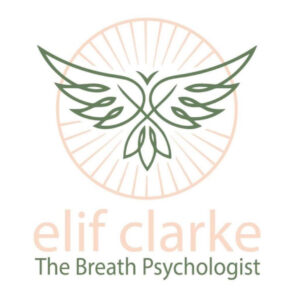The Interconnectedness of Breathing Analysis, the Vagus Nerve, and Polyvagal Theory in Transformational Breath
In recent years, the understanding of how our nervous system interacts with our breath has deepened significantly, thanks in large part to advances in neuroscience and psychophysiology. One area where this knowledge has become particularly relevant is in Transformational Breath, a practice that uses breathing analysis to unlock emotional, physical, and psychological healing. This article explores the profound relationship between breathing analysis in Transformational Breath, the vagus nerve, and Polyvagal Theory, highlighting how these elements work together to promote healing and well-being.
Understanding the Vagus Nerve: The Body’s Superhighway
The vagus nerve is one of the longest and most complex nerves in the body, stretching from the brainstem down through the neck, chest, and abdomen. It plays a critical role in the parasympathetic nervous system, which is responsible for regulating the body’s rest-and-digest functions. The vagus nerve influences many of the body’s vital functions, including heart rate, digestion, and respiratory rate, making it a key player in maintaining homeostasis.
When we breathe deeply and rhythmically, we stimulate the vagus nerve, which in turn activates the parasympathetic nervous system. This activation promotes a state of calm and relaxation, counteracting the fight-or-flight response that is triggered by stress. In Transformational Breath, breathing analysis helps identify areas where the breath is restricted or shallow, which often correlates with an underactive or overstressed vagus nerve. By guiding the breath into these closed areas, we can stimulate the vagus nerve more effectively, enhancing the body’s ability to relax and recover from stress.
Polyvagal Theory: A New Perspective on the Nervous System
Polyvagal Theory, developed by Dr. Stephen Porges, offers a nuanced understanding of the autonomic nervous system (ANS), which controls involuntary bodily functions. According to this theory, the ANS is divided into three primary states:
- The Ventral Vagal State: Associated with social engagement, safety, and connection. This state is governed by the ventral branch of the vagus nerve.
- The Sympathetic State: Linked to the fight-or-flight response, this state prepares the body to respond to perceived threats.
- The Dorsal Vagal State: Associated with shutdown, dissociation, and immobilization, this state is governed by the dorsal branch of the vagus nerve.
Polyvagal Theory emphasizes that our ability to move fluidly between these states is crucial for emotional and physical health. However, when the nervous system becomes dysregulated—due to chronic stress, trauma, or other factors—we may get stuck in either a heightened (sympathetic) or depressed (dorsal vagal) state, making it difficult to return to the ventral vagal state of safety and connection.
Breathing Analysis in Transformational Breath: A Pathway to Nervous System Regulation
Breathing analysis in Transformational Breath offers a powerful way to influence the vagus nerve and, by extension, the autonomic nervous system as described by Polyvagal Theory. By assessing a person’s breathing patterns, practitioners can identify whether their breath is shallow, restricted, or imbalanced—signs that the vagus nerve may not be optimally engaged and that the person may be stuck in a sympathetic or dorsal vagal state.
For example, if a person’s breath is primarily confined to the upper chest, this may indicate a sympathetic dominance, where the body is in a constant state of readiness to respond to perceived threats. Conversely, if the breath is shallow and restricted in the abdomen, it could suggest a dorsal vagal state, where the person feels disconnected and shut down.
Through the targeted use of breathing analysis, Transformational Breath practitioners can guide clients in opening these restricted areas of the respiratory system, encouraging fuller, deeper breathing that engages the vagus nerve. This process helps shift the nervous system back toward the ventral vagal state, where the person can feel more balanced, connected, and capable of responding to life’s challenges in a healthy way.
Breathing Analysis, Vagus Nerve Stimulation, and Emotional Integration
One of the most transformative aspects of breathing analysis is its ability to help integrate emotions that have been suppressed or repressed. The vagus nerve, through its extensive connections, plays a key role in processing and regulating emotions. When we breathe deeply into closed areas of the body, we not only stimulate the vagus nerve but also gain access to these stored emotions.
For instance, tension in the diaphragm or shallow breathing in the chest can be associated with unprocessed fear or grief. By using breath to open these areas, we allow these emotions to surface and integrate, which is a key aspect of emotional healing. As the breath begins to flow more freely and the vagus nerve is more effectively engaged, clients often experience a release of emotional and physical tension, leading to a sense of profound relief and integration.
The Role of Muscle Relaxation and Positioning in Vagal Tone
In addition to guiding the breath into closed areas, Transformational Breath also uses muscle relaxation and specific body positions to enhance breathing and stimulate the vagus nerve. Relaxing the muscles that control respiration—such as the diaphragm, intercostals, and abdomen—can increase vagal tone, which refers to the strength and effectiveness of vagus nerve activity. Higher vagal tone is associated with greater emotional resilience, better stress management, and improved overall health.
Certain body positions, such as those that open the chest or elongate the spine, can further enhance vagal stimulation. By combining these techniques with conscious breathwork, Transformational Breath practitioners can help clients achieve deeper states of relaxation and emotional integration, moving them toward a more balanced and regulated nervous system.
Conclusion: The Synergy of Breath, Vagus Nerve, and Polyvagal Theory
The intersection of breathing analysis, the vagus nerve, and Polyvagal Theory offers a comprehensive approach to healing that addresses both the physical and emotional dimensions of well-being. Through the skilled use of breathing analysis in Transformational Breath, we can stimulate the vagus nerve, promote nervous system regulation, and facilitate the integration of suppressed emotions.
This approach not only helps clients achieve immediate relief from stress and tension but also supports long-term healing by empowering them to understand and influence their own nervous system. By bringing awareness to their breath, clients can learn to navigate the different states of their autonomic nervous system more effectively, leading to greater emotional resilience, deeper connections, and an enhanced sense of well-being.


Recent Comments